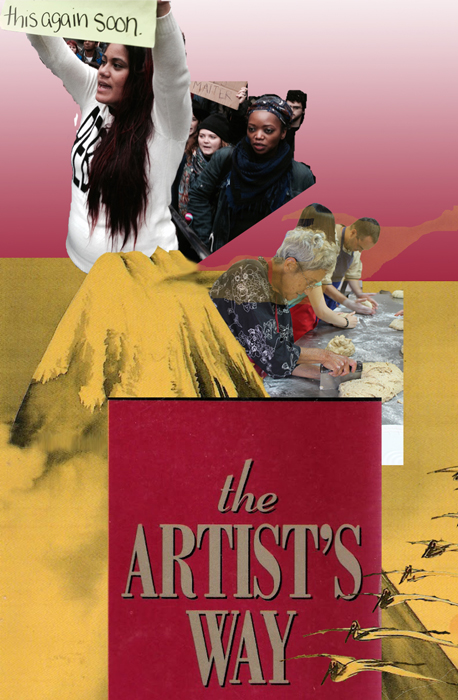Issues- Art Projects- Critical Conversations- Lectures- Journal Press- Contact- Home-

#9
bios
buy
The technical asset of any horizon is that it opens up tomorrow. A general anti-capitalist horizon opens up boundaries between fixed positionalities and reveals them as possibly useful parochialisms. The technical asset of any art is not that it connects people, but rather that it is a tool that can be employed to connect to people. People have primacy here because in social change, we are talking about relations between people, whether they are relations that impact the environment or any class of people with disproportionate inequality.
The structural conflicts that Ferguson and also Climate Change reveal are that the system (ie. governance) can keep chugging along despite its disregard for the death of people and planet. “The system works!” as long as they stay in power. The system is shorthand for the dominant powers, the state enacts its governmentality.
Art does not change the system. Art used well facilitates systemic change. The event of protest and resistance is both oversold and undersold. It is oversold because it takes planning and care to arrive at the capacity for real, meaningful change. It’s undersold because the system does not want you to imagine that events are really possible.
For our purposes, art works in two ways. In the first way, it models how people can practice “radicality” together, in whatever form- be that in breaking stuff, harvesting, eating lunch, organizing meetings, dancing. Some of this looks like “social practice,” most of it is just stuff we do.
The second way presents concepts to be mulled over. This is what painting, sculpture, the news and also social practice art does. It is experienced in remove, which is the ultimate distinction between this art and social practices.
The two, social practices and art are not in a dialectal opposition; they flow into eachother through the course of the day and over the course of a life. Thought overcomes itself, and practices evolve, but sometimes one is needed to crack the other. Both can be used by either the state or for radical purposes and none, in the ideal is a higher form. Praxis requires both in due proportion.
Ultimately, radical art and protest push to remake social relations in opposition to the facts the state demands to be true through its laws, food distribution, journalisms, economic reality and its “monopoly” on violence. We remake the world by insisting that our world, as a function of our arts, is better. The general horizon of resistance creates a broad window, inclusive of time, space and beings in which to fight for our facts of life.
Bibliography
Michel Foucault, The Birth of Biopolitics. Palgrave MacMillan 2008.
Danni Dilly, A Time to Be. Plipspippy Press 2010.
Emanuele Leonardi, Biopolitics of Climate Change: Carbon Commodities, PhD thesis 2012.